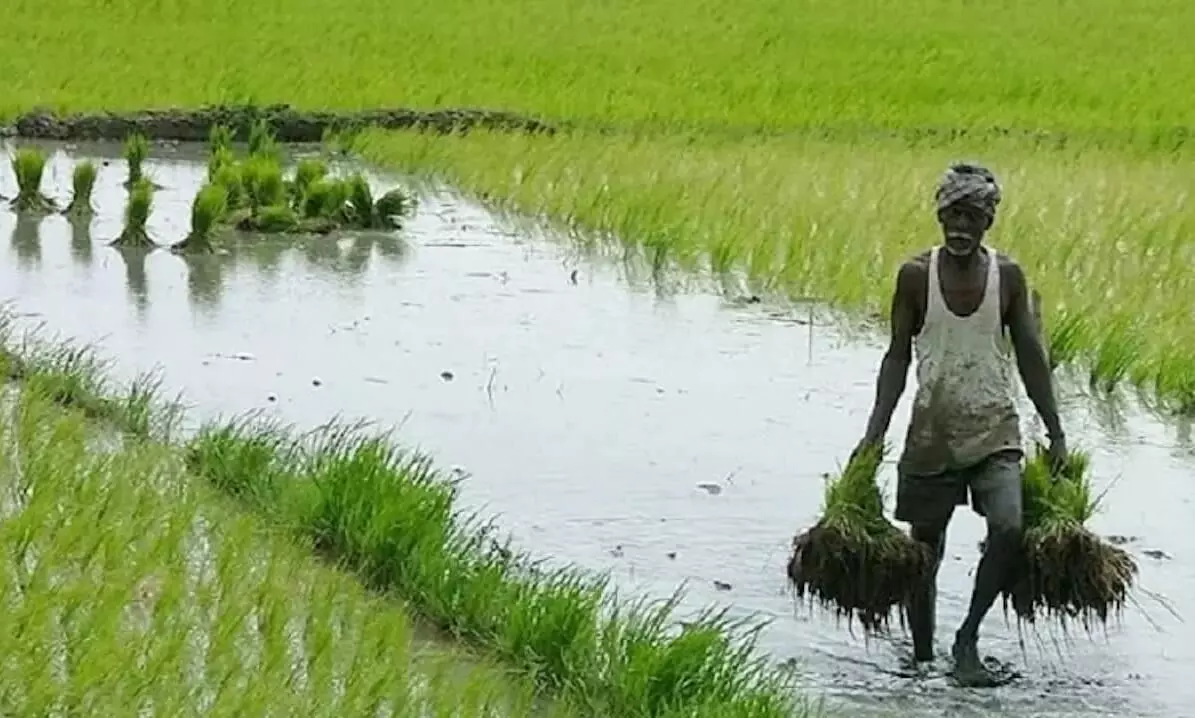
CSIR with new initiative to improve farmers' productivity & income
text_fieldsChennai: Aiming to improve soil health and productivity, the Council of Scientific and Industrial Research (CSIR) introduced a special mission to develop region-specific smart agrotechnologies for paddy in south India. The mission ultimately aims to increase farmers' income, PTI reported, citing a senior scientist.
This endeavour will help the central government introduce the use of automation, sensors, drones, and artificial intelligence gadgets for agriculture in the future.
"This is one of the first of the mission mode projects that have been conceived and implemented on the ground," he said.
The project envisages the use of Internet of Things (IoT) based sensors and drone-based hyper and multispectral imaging to generate a real-time precision database to develop knowledge on phenological and physiological indicators as influenced by micro-environment of various target crops being grown across different agro-climatic conditions of the country.
A team of scientists and technologists from CSIR Fourth Paradigm Institute, Bengaluru, CSIR-National Aerospace Laboratories, CSIR-Indian Institute of Integrative Medicine Jammu, and CSIR-Central Mechanical Engineering Research Institute, Ludhiana, identified the paddy fields of farmers at Chengalam, Thiruvarppu panchayat and Muleppadam Panchayat in Kottayam, Kerala, Senbagaraman Pudur and Navalkadu in Nagercoil, Tamil Nadu, and Hosapete in Karnataka for the mission.
Under this, they would measure and document real-time data on soil and crop health indicators using advanced technologies like soil optix for soil health mapping and multispectral imaging of crop canopy through UAVs for crop health monitoring.
The outcome would help to develop improved crop-specific agrotechnologies for enhancing soil and plant health through optimisation of mineral nutrition, irrigation, real-time crop management, and agronomic practices for good crop husbandry, pest-disease management, and achieving quality and sustainable crop yields.
The investigation would serve as the baseline data for mapping soil health and preparation of high-definition nutrient and texture maps of the soil. These soil health maps will be used for variable rate precise fertiliser application using UAVs and granular fertiliser applicators.
Multispectral imaging would help identify areas of stress, disease, and pest infestation, allowing for targeted and timely interventions. This data would keep the paddy growers abreast with the different crop phenological and physiological events and overall production ecosystem, which would help them to make timely and precise decisions about their crops, leading to the optimisation and precise management of crop inputs and increasing the quality productivity and profitability while reducing the adverse environmental impact.
Crop modelling coupled with predictive analytics is aimed at developing multilevel phenological-cum-disease surveillance and mitigation interventions, which would serve as a powerful tool for enhancing the paddy yield both quantitatively and qualitatively.
The drone-based imaging and soil optix for measuring soil health in real-time will be a continuous process throughout the life cycle of the plant for the next two or three years.
After successful implementation in paddy, the technologies will be deployed for other crops like saffron, apple, gerbera (decorative garden plant), mints, lemongrass, etc.
Senior scientists of the CSIR, including Dr Ramesh K V, Dr Rakesh V, and Dr Shahid Rasool, have been making concerted efforts to ensure this mission is a success.
"The first and foremost crop for our intervention was paddy, considering that it is the number one crop in the country in terms of consumption, production, and scale of cultivation," the scientist explained how the crops and area were chosen.
Another indicator for identifying crops in the country was economic value, such as the Jammu & Kashmir apple.
"The apple industry, for instance, is worth more than Rs 12,000 crore. This and saffron from Jammu & Kashmir were identified based on economic value, geographical expanse where they are grown, their potential on how they can transform the income situation of the farmers besides challenges in production," he added.
























